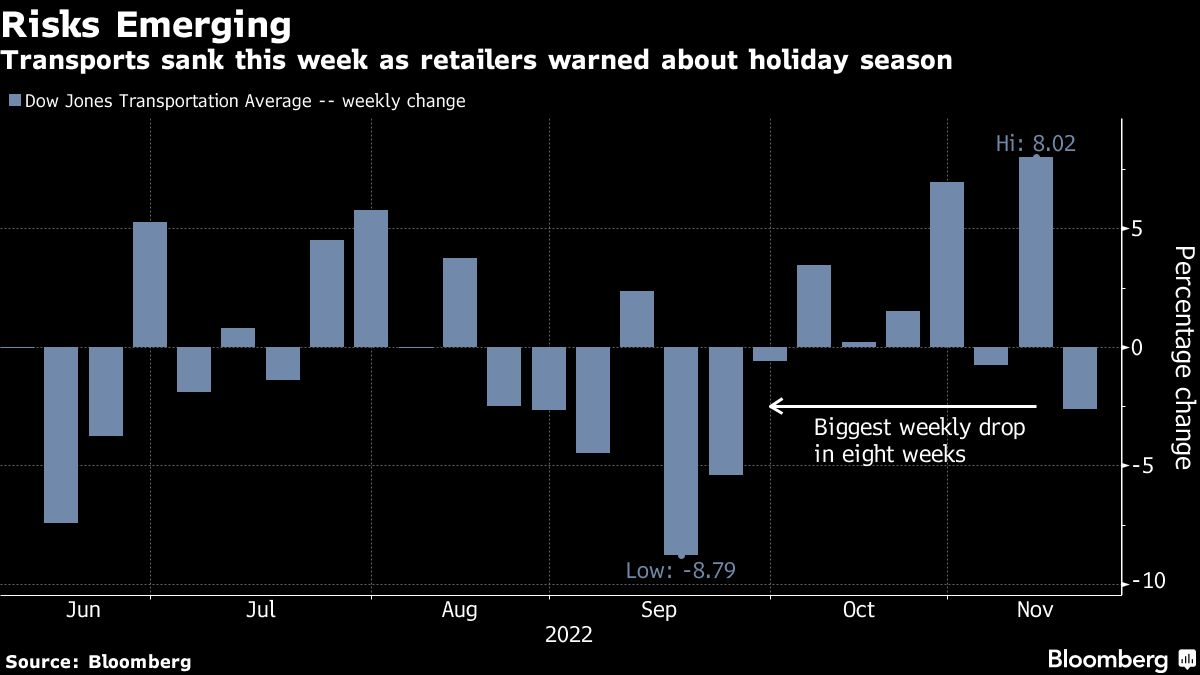Companies that move and deliver goods are getting an early warning November 18 about a potential one-two punch that could hit hard this holiday season.
A deluge of retailer earnings reflected shoppers paring back spending as inflation soars and recession fear mounts. Meanwhile, consumer surveys by Citigroup Inc. and Goldman Sachs suggested that people increasingly want to spend their money in stores, which is bad news for parcel and last-mile delivery companies that benefitted from the online-shopping boom in the wake of the COVID pandemic.
The Dow Jones Transportation Average has lost 2.6% so far during the week beginning November 14, with Matson Inc. and Old Dominion Freight Line Inc. leading declines. The gauge is on pace for the worst week in two months.
The decline is understandable. A slew of retailers warned about diminishing demand during the week of November 14, including Target Corp., Kohl’s Corp. and Williams-Sonoma Inc. And strong third-quarter earnings from Walmart Inc. came down to its ability to lure shoppers with discounts amid surging inflation.
Overall, the outlook for the holiday shopping season is darker than usual — bad news both for retailers and transportation companies further down the supply chain.

That will likely lead to a “season of muted volumes for transports in the upcoming holiday season and into the start of 2023,” Susquehanna Investment Group analyst Bascome Majors wrote in a note November 17. Walmart, Target, Home Depot Inc. and Lowe’s Cos. are among the highest-volume, publicly traded importers of containerized goods in the U.S., he wrote.
An additional risk for truckers and other transportation stocks is consumers’ increasing preference to do their shopping in stores, as Goldman and Citi found, which cuts into online purchases. For companies such as FedEx Corp., United Parcel Service Inc., XPO Logistics Inc. and Ryder System Inc., that can translate into weaker volumes.
“While e-commerce trends have remained sticky post-pandemic, only 40% of survey respondents indicated plans to spend more online this year, the lowest rate of increase we’ve seen since pre-pandemic,” Goldman Sachs analysts wrote in a note November 18.
- Coinsmart. Europe’s Best Bitcoin and Crypto Exchange.Click Here
- Platoblockchain. Web3 Metaverse Intelligence. Knowledge Amplified. Access Here.
- Source: https://www.supplychainbrain.com/articles/36141-shoppers-spend-less-leaving-companies-that-deliver-goods-empty-for-the-holidays



